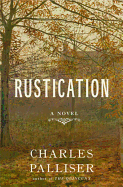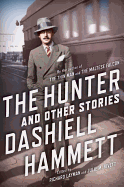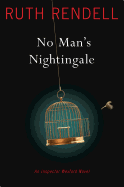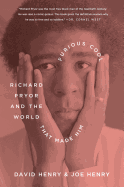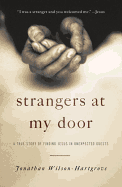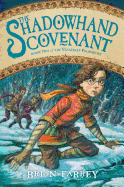Friday, November 15, 2013
Read more short stories. There, I said it. In our 24/7 plugged-in world, you might think short stories would be more popular than ever, but I'm not so sure they are. Will Alice Munro's well-deserved Nobel Prize change all that? I hope so. I'm no evangelist. Just a reader of stories.
How do I find them? Sometimes it really is as simple as a favorite writer's next book, which happened for me with Jessica Keener, who followed up her novel Night Swim with the new collection Women in Bed ("So she fled as any animal would, out of instinct, toward the scent of nurturing waters and the promise of a sweet tasting hand."). This was also true of Kevin Barry's Dark Lies the Island ("Every line had the dry inflected drag of irony--feeling was unmentionable. We talked about everything except the space between us."). His amazing debut novel, City of Bohane, won the International Impac Dublin Literary Award. 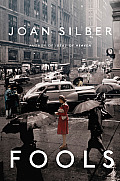 In fact, I often find great collections among prize nominees. Consider George Saunders's Tenth of December, on the National Book Award shortlist; or the NBA longlisted Fools by Joan Silber ("So, in the end, we were hypocrites for kindness. Both of us. Standing with my bouquet of orange blossoms, I thought: I'm happy but I'm in disguise. But probably many people feel that at their weddings.").
In fact, I often find great collections among prize nominees. Consider George Saunders's Tenth of December, on the National Book Award shortlist; or the NBA longlisted Fools by Joan Silber ("So, in the end, we were hypocrites for kindness. Both of us. Standing with my bouquet of orange blossoms, I thought: I'm happy but I'm in disguise. But probably many people feel that at their weddings.").
And sometimes story collections just find me, as was the case with The Isle of Youth by Laura van den Berg ("I imagined other people discovering the bracelet through the years and me telling each one a different story.") and This Is Paradise by Kristiana Kahakauwila ("But we don't think everything is okay. Something is amiss, muddled. Years have passed since we listened to our dreams, since we were youthful enough to trust them.").
So here's my holiday reading wish for you: Find someone to tell you a few good stories. --Robert Gray, contributing editor
Lies You Wanted to Hear
by James Whitfield Thomson
It's not often an author in his mid-60s publishes a debut novel that proves worth the wait. But that's what James Whitfield Thomson has done with Lies You Wanted to Hear, a haunting piece of fiction that will bring a lump to your throat. Whitfield Thomson's anguishing tale is told so thoughtfully that it leaves readers in the unusual place of trying to determine right from wrong.
The romance begins innocently enough. Good guy cop Matt meets the intriguing and sexy Lucy and falls hard. Despite her being hung up on her cad of an ex-boyfriend, Griffin, the two marry and children follow. Although the newlyweds both adore their children (and Matt still adores Lucy), their domestic bliss is shattered when Griffin returns to steal a restless Lucy back into his arms. So far, this is hardly uncharted territory, but then Whitfield Thomson loops a twist into the mix no one will see coming, leaving readers in disbelief.
Matt, the loyal husband and loving father, begins to show a sinister side, while self-centered Lucy goes from a faithless wife to someone with whom every reader can identify. Whitfield Thomson performs this sleight-of-hand so deftly, he might as well be a magician. Wrenching to read, but nearly impossible to put down, Lies You Wanted to Hear is hopefully the first of many more reads by an untapped author as he enters the prime of his life. --Natalie Papailiou, author of blog MILF: Mother I'd Like to Friend
Discover: A surprising triumph from a first-time author that will resonate long after readers have devoured it.
Rustication
by Charles Palliser
It has been more than a decade since Charles Palliser's last novel, The Unburied, and Rustication returns to that book's setting in the coastal town of Thurchester. The title describes the act of being expelled from a school or compelled to reside in the country. Both definitions may be applicable to 17-year-old Richard Shenstone, who leaves Cambridge in December 1864 for his family's new home in a "benighted backwater" of a "wind swept marshland." Unknown to Richard, his father has recently died, and his mother and sister aren't particularly pleased to see him. His mother even calls him Willy at first. Why?
At church, he meets the Rector Quance's family and the Lloyds. He wastes no time wheedling himself into this social world, as well as admiring the young women, including Betsy, the family's servant. There's some talk about a Shenstone scandal. People begin receiving badly misspelled, vile, threatening letters, animals are mutilated and eventually there's a murder. Richard records all this in his journal, as well as his opium and alcohol use and his womanizing.
As the variant narrative lines begin to spread out like a spider's web--per Palliser's usual charming penchant for narrative confusion--Richard's journal-voice changes. Though not as long nor as complicated as Palliser's most famous work, The Quincunx, Rustication is a hugely enjoyable, atmospheric journey into the rich, damp, gothic world of late 19th-century England. --Tom Lavoie, former publisher
Discover: The long-awaited return to the meticulously detailed, yet always mysterious, gothic world of Charles Palliser's Victorian-era fiction.
Havisham
by Ronald Frame
Miss Havisham is one of the most famous of Charles Dickens's characters: jilted at the altar, she isolated herself within her mansion, wearing her wedding dress the rest of her days (until it catches fire, killing her). Using the few "biographical" clues strewn about Great Expectations, Ronald Frame turns this supporting cast member in Pip's story into a completely realized character in her own right, including a first name: Catherine.
In Havisham, she tells her story. After her mother's death in childbirth, she is raised by her father, a wealthy Kent brewer. Father watches over her carefully, raising her as a proud "Havisham," worthy of an upper-class life. To help foster this, he sends her to Durley Chase to live with Lady Chadwyck and her children, which Catherine loves; she feels like "a flower that's had a dark time growing, opening at last to the sun."
Durley Chase is a place of poetry, dances, balls, fine clothes. It begins to turn Catherine into a bit of a snob. After a brief attraction to young "W'm" Chadwyck, she meets Charles Compeyson. He's charming, witty and, unlike W'm, has a bit of the bad boy in him. Catherine falls for him, and soon she's on a "silken halter." Compeyson loves to gamble and Catherine helps him with his many debts; he plays her perfectly. As readers of Great Expectations know all too well, the promised marriage never occurs, and Miss Havisham self-destructs. Years later, only Estella (and Pip) can "save" her ruined life.
Frame provides much entertainment as we plunge into the believable "life" of this mysterious, forlorn woman. --Tom Lavoie, former publisher
Discover: If you love Great Expectations, you'll bask in the light of Ronald Frame's detailed and atmospheric tale about the dark and tragic Miss Havisham.
Mystery & Thriller
Purgatory
by Ken Bruen
Ken Bruen is an Irish treasure. His noir protagonist Jack Taylor is an ex-cop from the Galway Guard wrestling with a host of addictions. Among his few friends are Stewart, a drug dealer turned Zen master, and Ridge, a tough, gay sergeant of the Guard. In Bruen's nine previous Taylor novels, Jack's been around, been jacked up and beaten down, but has remained "always the hard arse" and "a cocktail of self interest, self-doubt, and of course self-harm." As he says, "That doesn't make me bad so much as Irish."
In Purgatory, a serial vigilante killer using the pseudonym Oscar Wilde sends cryptic notes to Taylor trying to get him to help in eliminating Galway's unpunished criminals freed by shady defense lawyers. But Taylor doesn't bite. Instead, he takes on a simple investigation into a church statuary theft and reluctantly accepts a lucrative assignment from Reardon, an expat American dot-com billionaire who's out to buy all the city's depression-priced property and suspects an employee of selling information to his competition. On the wagon, but with frequent lapses, Taylor lets Stewart pursue the vigilante while he pursues Reardon's attractive, smart-mouthed American assistant, Kelly. But violence won't leave Taylor alone: Ridge is beaten nearly to death and Stewart pushes his vigilante hunch one shotgun blast too far. And Kelly... well, she turns out to have a psychopathic past and an obsession with Oscar Wilde.
Bruen's dazzling Irish storytelling voice has its roots in the descriptive wit of Robert Parker and the lowlife dialogue of George V. Higgins. In Purgatory, Ken Bruen brings his A game. --Bruce Jacobs, founding partner, Watermark Books & Cafe, Wichita, Kan.
Discover: In perhaps the best novel of his Jack Taylor series, Ken Bruen pits the troubled Galway private investigator against an American billionaire and his entourage.
Singularity
by Steven James
With Singularity, Steven James (Placebo; The Pawn) returns to his series of thrillers starring the illusionist Jevin Banks, pitting Banks and his team against a secret conspiracy involving human experimentation and narco-trafficking that threatens the future of humanity.
Secret experimentation in artificial intelligence and human consciousness at Plyotech has begun spinning out of control. The first victim is Emilio Benigno, a young magician whom Banks has been mentoring. After Emilio dies during an illusion gone wrong in the Philippines, Banks finds a USB drive in his belongings containing enigmatic information that implies Emilio was mixed up in matters way over his head.
Banks and his devoutly religious assistant/girlfriend, Charlene, return to their home in Las Vegas. With the help of their hacker friend Fionna and her four homeschooled children (who are also hackers), they start investigating Emilio's death and the mysterious--and morally questionable--research a murderous man who calls himself Akinsanya is implementing at Plyotech.
James skillfully weaves together widely disparate elements in Singularity, from Area 51 conspiracies to magic tricks to prostitutes to discussions on the nature of creation and what exactly it means to be human. The book moves at a rapid pace, as Banks and his associates race to stop the dangerous forces at work. Fans of techno-thrillers, Christian fiction and magical mysteries will all be intrigued by Singularity. --Jessica Howard, blogger at Quirky Bookworm
Discover: A thriller that pits a team of magicians against an evil corporation experimenting with human consciousness.
The Hunter and Other Stories
by Dashiell Hammett; edited by Richard Layman and Julie M. Rivett
In a follow-up to 2012's The Return of the Thin Man, Mysterious Press compiles another batch of largely unpublished Dashiell Hammett fiction in The Hunter and Other Stories. As Julie M. Rivett, Hammett's granddaughter, says in an afterword to the collection, these pieces "offer fresh glimpses into Hammett and his shifting worldview--as a reflective, enigmatic man who toggled between poverty and wealth."
"This volume includes some of Hammett's finest short fiction," Rivett and her co-editor, Richard Layman, assure us, and for work the author left in his drawer, they are surprisingly good. "The Kiss-Off" is particularly noteworthy. This screen treatment became the basis for City Streets (1931), starring Gary Cooper and Sylvia Sidney, of whom Hammett said, "She's good, that ugly little baby, and currently my favorite screen actress."
The first four stories reveal Hammett's experiments in the treatment of crime, including the title story, "The Hunter," in the mold of the Continental Op stories. The next group deals with his longstanding interest in the ways men struggle to find a purpose in their lives, while the stories in the third section explore what he called the "relation between the sexes," revealing strong sympathies toward the female characters.
Hammett always said his fiction dealt with people: "It's up to readers to try to figure out what in the name of God they're about, if anything." --Tom Lavoie, former publisher
Discover: This book consists of unpublished stories and rarely seen work from Hammett's Hollywood years, in what may be the final cache of writing from the noir pioneer.
No Man's Nightingale
by Ruth Rendell
Retired Chief Inspector Reginald Wexford returns in No Man's Nightingale, the 24th book in Ruth Rendell's mystery series. Wexford's former deputy Mike Burden, now a chief inspector himself, requests his help on a case involving the strangulation murder of Sarah Hussein, the vicar of Kingsmarkham.
Hussein--not only a female priest but a biracial, single mother--has no shortage of detractors, and a hate crime becomes the natural conclusion. As Wexford continues to investigate, however, Hussein's past and her daughter's paternity spark possible alternatives to the hate crime theory.
Meanwhile, a somewhat unrelated plot line causes Wexford angst. Much to his chagrin, his housekeeper, Maxine Sams, loves to talk, and while bragging about her son, she unknowingly imparts details of a crime to Wexford. He's left with no alternative but to report it.
While No Man's Nightingale is ostensibly about the mystery of Sarah Hussein's murder, the novel centers on Wexford's acclimation to his new stage in life. He's cognizant of the differences in his interactions with people connected to the investigation; he's aware of his relationships with his wife and family and how retirement affects those relationships. Rendell depicts Wexford's challenging transition with humanity and aplomb. Long-time Wexford fans and new readers alike will identify with his experiences.
The pace of No Man's Nightingale mimics Wexford's new life and the minor storylines cause the main plot to be looser, but those who appreciate multi-layered puzzles and complex characters are sure to enjoy themselves. --Jen Forbus of Jen's Book Thoughts
Discover: A vicar's murder has retired inspector Wexford investigating racists, rapists and fantasists.
Biography & Memoir
American Mirror: The Life and Art of Norman Rockwell
by Deborah Solomon
Magazine cover art is not the ubiquitous phenomenon it once was. "Illustrators," as Norman Rockwell would have put it, are largely left only with the ironic platform of the New Yorker, and Rockwell didn't do "irony" unless it was a gentle, playful irony. While many other mid-century American artists dazzled critics with nothing more than their "abstract expressions," Rockwell and his huge audience saw more in boys (and sometimes girls) being boys, whether at war, at the ball field, at prayer or at the dentist's office.
Deborah Solomon's American Mirror is neither nostalgia nor revolutionary revisionism. Solomon is a pro whose biographies of Jackson Pollock and Joseph Cornell remain definitive studies, and she takes a fresh look at a man who transcended his complicated and troubling inner life to achieve a commercial success that allowed him to live, if not a "Norman Rockwell life," at least a full and reasonably satisfying one. When Breaking Home Ties (his 1954 Saturday Evening Post cover depicting a rural workingman father sending his scrubbed-up son off to college) sold at Sotheby's for $15 million in 2006, Rockwell at last joined the highest ranks of his contemporaries--although he probably would have preferred to be named to the Baseball Hall of Fame (which he was, in a way: two of his baseball-themed Post covers now hang prominently in Cooperstown). Through his art, Rockwell did as much as anyone to create an "American mirror" reflecting an ideal to which both recent immigrants and native-born citizens could aspire. Would that we might have such an ideal again. --Bruce Jacobs, founding partner, Watermark Books & Cafe, Wichita, Kan.
Discover: Following her definitive biographies of Jackson Pollock and Joseph Cornell, Solomon brings her careful research and easy prose style to a different sort of American icon.
Furious Cool: Richard Pryor and the World That Made Him
by David Henry and Joe Henry
Before there could be Ice-T or Chris Rock--maybe even before there could be Barack Obama--there had to be Richard Pryor. A skinny black kid born in Peoria in 1940, Pryor was raised in a brothel by his grandmother after his parents divorced. He did his first standup comedy for his sixth-grade classmates, punctuating the jokes and stories he'd heard around the whorehouse with the dynamic facial and body expressions that became his trademark style for the rest of his over-the-top career. Years later, brothers David and Joe Henry taped Pryor off their television, laughing along to the voice and attitude that gave them the confidence to get out of Akron and follow their own dreams in the film and music industries.
While the Henrys acknowledge Pryor's genius was not his words but how he presented them, Furious Cool quotes extensively from his films, records, memoirs and TV appearances. And though his comedy was rife with obscenity, sex and drugs, it was the frequent use of one word that made white audiences squirm and black audiences cheer, and, perhaps, propelled Pryor to fame (and infamy). As the Henrys point out, the reason today's "audiences and middle American hip-hop listeners are well versed in the N-word's variant spellings and nuanced meanings" can be traced back to Pryor's routines--"[but] no matter how much white people might praise or pay him, Richard Pryor knew that, behind his back, he would always be a n****r."
We forgave Richard Pryor's profanity, addictions and womanizing because he made us laugh--and made us think. --Bruce Jacobs, founding partner, Watermark Books & Cafe, Wichita, Kan.
Discover: Two white brothers inspired as teens by Richard Pryor's often raunchy social satire team up to write his biography.
Religion
Strangers at My Door: A True Story of Finding Jesus in Unexpected Guests
by Jonathan Wilson-Hartgrove
In 2003, social activists Jonathan and Leah Wilson-Hartgrove visited war-torn Iraq as part of an American peace-making delegation. When friends of the couple were nearly killed, then saved by local Muslims in a town called Rutba, the experience inspired the Wilson-Hartgroves in their own walk of Christian faith. They returned to the United States and moved with their children to a neighborhood in Durham, N.C., where, as "white outsiders" in an African-American community, they set out to embody Jesus' sentiment about "welcoming strangers." They opened their home, which they called Rutba House, to anyone who needed help--day or night. This included welcoming those fleeing abusive relationships, released prisoners, war veterans, addicts and drug dealers looking to make a fresh start, urban scavengers and street workers. The couple's decade-long experiment was rooted in their faith and trust that God's grace would lead them in their mission of hospitality.
Strangers at My Door offers a collection of inspiring stories of how the Wilson-Hartgroves enriched their lives and the lives of others by founding and cultivating a community--an "extended family" of married and single people with different gifts, talents and jobs--committed to sharing and helping each other build a life together. The project was not without risks, as extraordinary acts of generosity and openness often incurred chilling disappointments and battle scars. The Wilson-Hartgroves proved relentless, however, refusing to believe anyone was beyond redemption, vowing always to focus on goodness and hope in the midst of challenges. --Kathleen Gerard, blogger at Reading Between the Lines
Discover: The inspiring story of a Christian couple who founded a community of hospitality, hope and respite for the troubled and impoverished.
Children's & Young Adult
The Silver Button
by Bob Graham
Bob Graham (A Bus Called Heaven) endows a baby's milestone with all the reverence it deserves in this outstanding picture book.
At 9:59 on a Thursday morning, young Jodie's pen hovers over the final button on the boot of the duck in her drawing, and her baby brother Jonathan "pushed slowly to his feet." Jonathan sways and tilts. Readers see him in a close-up view, focused on the family dog and Jodie's drawing as he takes his first step: "He took that step like he was going somewhere." Graham pulls back to a view of Jonathan's mother playing a pipe in the kitchen. The clock still shows 9:59 as, in the living room, Jonathan's left foot remains airborne. Graham pulls back farther still. A gull's eye–view reveals the public gardens and Jodie's block. "Sunlight hit the windows of the city and phones rang in a thousand offices and pockets." These lives so close by know nothing of Jonathan's breakthrough. Jodie is his witness: "Then down came Jonathan on his little pink knees." She tells her mother, "Jonathan's just taken his first step," as she draws that last silver button. As their mother holds Jonathan and this momentous event sinks in, the dog scratches and "the kitchen clock struck ten."
All of the meticulous details of this warm household fall away to focus on this one life-changing minute. Graham simultaneously illustrates how each life is the sum of these fleeting moments, and how important it is to pay attention so as not to miss them. Bravo! --Jennifer M. Brown, children's editor, Shelf Awareness
Discover: Bob Graham offers an affectionate record of the momentous occasion when a toddler takes his first step.
The Shadowhand Covenant: The Vengekeep Prophecies, #2
by Brian Farrey, illus. by Brett Helquist
Jaxter Grimjinx and his family of thieves returns in a suspenseful follow-up to The Vengekeep Prophecies, in which the High Laird is being robbed and the Shadowhands ("elite thieves-for-hire") are vanishing.
Like the first book, this one opens with a spectacle: Nanni's funeral. But, as with the Festival of the Twins in the previous book, the event is an excuse to loot. It's "an old thieving tradition.... When you decide to retire, you fake your death," explains Jaxter's Da to the Dowager Annestra Soranna, and houses are robbed during the funeral. But this makes the Dowager uncomfortable. She's an upstanding citizen--and sister of the High Laird. That's not the only cause of discomfort; another is the way the conversation turns to the Sarosan plight. The Sarosans, a peace-loving people, request an audience with the High Laird and are "promptly arrested" and labeled enemies of the state. In addition, five magical relics have been stolen from the High Laird, and the Shadowhands come to recruit Jaxter, his Ma and Da to help solve the mystery of their vanishing group.
Farrey cleverly gets readers new to the series up to speed without treading water for diehard fans. Jaxter's best friend Callie and his nemesis Maloch both return, but this book stands on its own. With humor, plot twists and sly political parallels, Farrey invents a tale that will bring back readers for the third installment. --Jennifer M. Brown, children's editor, Shelf Awareness
Discover: The latest tale of the thieving, warmhearted Grimjinx family as they attempt to discover what's happened to the vanishing Shadowhands.
Parrots over Puerto Rico
by Susan L. Roth and Cindy Trumbore, illus. by Susan L. Roth
The team behind The Mangrove Tree here traces the history of Puerto Rico's indigenous birds in jewel-toned collage. "Above the treetops of Puerto Rico flies a flock of parrots as green as their island home," they write.
Science and poetry rest compatibly together in Roth and Trumbore's text, as they distinguish the birds' "bright blue flight feathers" and add juicy language ideal for reading aloud: "Iguaca! Iguaca! The parrots called as they looked for deep nesting holes in the tall trees." A vertical orientation to the pages emphasizes the parrots' habitat among the treetops, and the sky-high battles against hurricane winds and predators such as the red-tailed hawk and pearly-eyed thrashers. Humans' arrival on the island--the first people in 5000 BCE--pose the greatest threat. Author and artist describe the birds' instincts to survive (mating rituals and how "each pair raised one family of chicks every year") even as humans' need for housing and farmland threatens the parrots' forests, and their numbers shrink from hundreds of thousands to just 24 parrots by 1967. The U.S. and the Commonwealth of Puerto Rico ("not a state, not an independent nation, but something in between," the text explains) established the Puerto Rican Parrot Recovery Program to save the birds.
Children will be heartened by the scientists' positive results and learning how these birds are making a comeback. An afterword with photographs of the sanctuaries, as well as a timeline and resources for further reading round out this heartening story, beautiful to behold. --Jennifer M. Brown, children's editor, Shelf Awareness
Discover: The science and history of the parrots of Puerto Rico, making a comeback, in beautiful jewel-toned collage.






